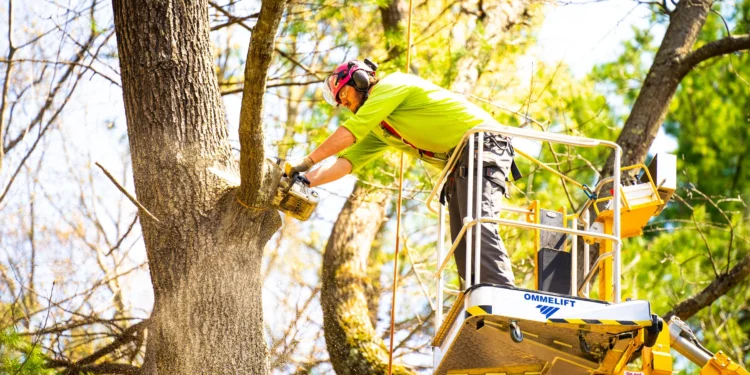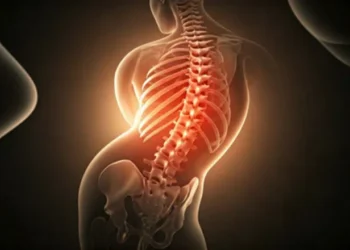Trees add beauty and value to any property, but they also require regular maintenance to stay healthy and safe. Many homeowners wonder which tree care tasks they can tackle themselves and which jobs need professional help. The answer depends on the size of the job, the tools required, and the potential risks involved.
Understanding the difference between DIY-friendly tasks and professional jobs can save money while keeping everyone safe. Some tree maintenance is straightforward and well within most homeowners’ capabilities. Other jobs involve serious safety risks that make professional help worth every penny.
Table of Contents
Simple Tasks You Can Handle Yourself
Small pruning jobs are perfect for homeowners who want to maintain their trees without calling in experts. Removing dead, damaged, or diseased branches keeps trees healthy and prevents these problems from spreading. Most people can safely handle branches up to about 2 inches in diameter using basic hand tools.
Young trees often need regular pruning to develop strong structure. Removing competing leaders, water sprouts, and poorly positioned branches helps trees grow into their best shape. These tasks require basic pruning knowledge but don’t involve the risks that come with larger jobs.
Watering and mulching fall well within the DIY category. Proper watering helps trees survive dry spells, while mulch retains moisture and protects roots from temperature extremes. Both tasks require time and attention but no special skills or dangerous equipment.
Medium-Sized Jobs That Need the Right Tools
Branches between 2 and 4 inches in diameter require more serious equipment but can still be DIY projects for homeowners with proper tools. A quality pole saw makes it possible to reach branches up to 12 feet high without climbing ladders or hiring professionals. These tools extend your reach while keeping both feet planted safely on the ground, making them perfect for homeowners who want to handle moderate pruning jobs themselves.
Removing lower branches to raise the canopy is another task that falls into this category. Many trees benefit from having their lowest branches removed to improve air circulation, prevent lawn mower damage, and create clearance for walking or parking underneath.
Storm cleanup often involves branches in this size range. After storms, homeowners frequently find themselves dealing with partially broken branches that hang dangerously but aren’t large enough to require professional removal. The right tools make these jobs manageable for most people.
When to Call the Professionals
Large branches over 4 inches in diameter present serious safety risks. These branches are heavy enough to cause significant injury or property damage if they fall unexpectedly. Professional arborists have the equipment and training to handle large removals safely.
Any work near power lines requires professional help, regardless of branch size. Electricity and tree work create a deadly combination that no homeowner should attempt to handle. Even branches that seem far from power lines can make contact during cutting or falling.
Tree removal almost always needs professional equipment and expertise. Removing entire trees involves calculating fall patterns, using specialized rigging equipment, and managing extremely heavy wood. The potential for serious injury or property damage makes this a clear job for experts.
Work requiring climbing or aerial equipment should be left to professionals. Climbing trees with chainsaws requires specialized training and safety equipment that most homeowners don’t possess. The combination of heights, sharp tools, and falling debris creates risks that trained arborists are equipped to manage.
Safety First: Essential Precautions
Personal protective equipment is non-negotiable for any tree work. Safety glasses protect eyes from flying debris, while work gloves provide better grip and protect hands from cuts and splinters. Hard hats become necessary when working under trees where branches might fall.
Understanding proper cutting techniques prevents accidents and tree damage. Making incorrect cuts can cause branches to split unexpectedly or fall in dangerous directions. Learning basic pruning principles helps homeowners work safely and avoid damaging their trees.
Weather conditions affect the safety of tree work. Wind can make branches unpredictable, while wet conditions make everything more slippery and dangerous. Dry conditions can make branches more likely to break unexpectedly. Waiting for calm, dry weather makes any tree work safer.
Choosing the Right Tools
Hand tools work well for small branches and detail work. Quality pruning shears, loppers, and hand saws handle most minor pruning tasks without the noise or complexity of power tools. These tools are also safer for beginners learning proper pruning techniques.
Power tools speed up larger jobs but require more safety precautions. Chainsaws can handle thick branches quickly but demand respect and proper training. Battery-powered options are often safer and more convenient than gas models for homeowner use.
Proper tool maintenance keeps equipment working safely and effectively. Sharp blades make cleaner cuts and require less force, reducing the risk of accidents. Regular cleaning prevents the spread of diseases between trees.
Know When You’re Over Your Head
Being honest about what you can handle isn’t giving up—it’s smart. Your fitness level matters here. Swinging heavy tools overhead gets exhausting fast, and tired people make mistakes. If climbing a ladder makes you nervous, that branch probably isn’t worth the risk.
Your town might have rules about tree work too. Some places want permits before you remove trees, others have seasons when pruning is off-limits. A quick call to city hall can save you from fines or angry neighbors who report you for breaking local tree protection rules.
Don’t forget about insurance either. Some policies won’t cover damage from DIY tree work gone wrong. Others might not pay out if you get hurt doing something they consider too dangerous for homeowners. A quick check with your insurance agent clears this up before you start cutting.
Why Pros Cost What They Do
Arborists spend years learning how trees actually work. They can spot diseases, identify which branches need to go, and know exactly where to make cuts so trees heal properly. Most homeowners learn this stuff the hard way by making mistakes that hurt their trees.
Their gear costs serious money too. Those bucket trucks and fancy rigging systems aren’t cheap, but they let arborists work safely at heights that would kill regular people. When you hire professionals, you’re paying for equipment that costs more than most people’s cars.
Playing It Smart
Cut small branches first to figure out if you enjoy this work. Pruning tiny shoots teaches you how trees respond to cuts without risking major damage. Once you get comfortable with hand tools, you’ll know if bigger jobs sound fun or terrifying.
Even if you plan to do the work yourself, talking to an arborist first can save you big trouble. Most will look at your trees for a reasonable fee and tell you exactly what needs attention. They might point out problems you never noticed or suggest ways to tackle jobs more safely.
You don’t have to choose between doing everything yourself or hiring professionals for every little task. Handle the routine stuff—watering, mulching, small pruning—and call in help for the scary jobs. This way you save money on simple maintenance while staying safe on complex work. Just remember the difference between a job that’s challenging and one that’s genuinely dangerous.


 Home
Home










